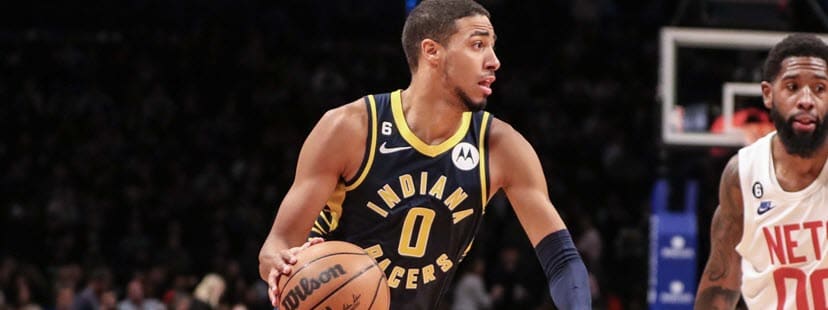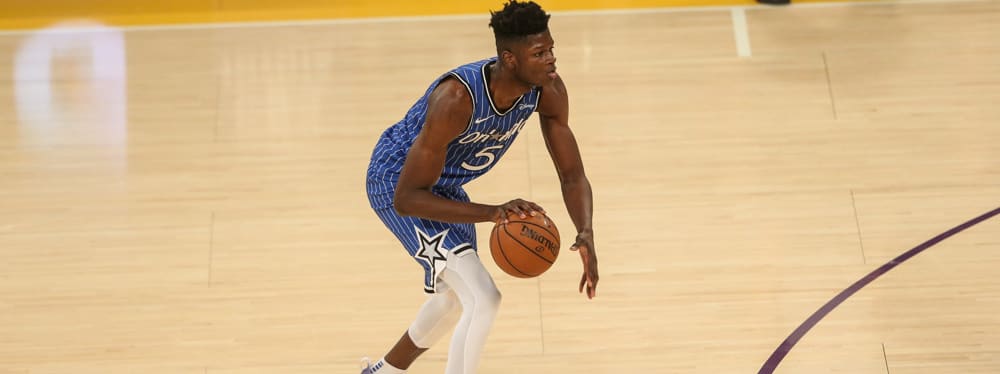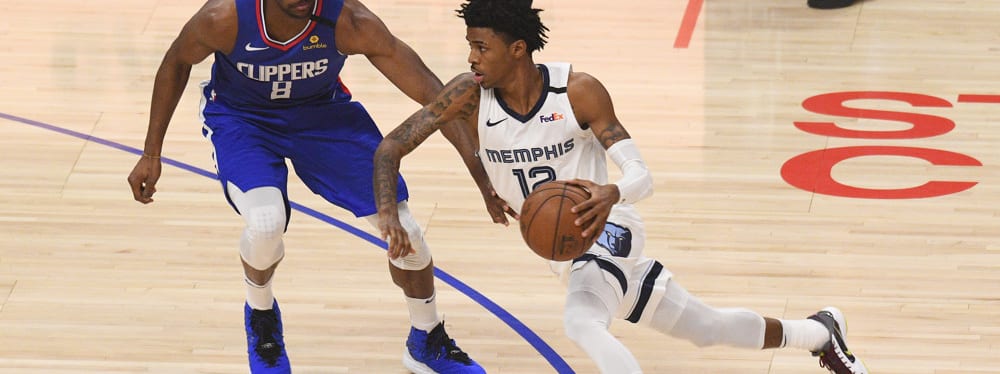Recent RotoWire Articles Featuring Frank Kaminsky
See More
Kaminsky played nine games for the Suns last year before suffering a knee injury that required surgery in early January, which ended his season. His status for the start of the 2022-23 campaign is unclear, but he signed a one-year minimum contract with the Hawks at the start of free agency, which shows Atlanta has faith he'll be serviceable next season. Kaminsky has played at least 15.0 minutes per game in all seven seasons in the NBA, but he faces a crowded frontcourt in Atlanta. Clint Capela and Onyeka Okongwu are set to see the majority of minutes at center, but Kaminsky offers a different look that'll open up plenty of space for Trae Young and Dejounte Murray to make plays. While the Hawks have plenty of talent at center, they don't have major depth, so Kaminsky could see a sizable role if either of the aforementioned big men go down with injuries. However, as it stands, Kaminsky projects to be limited to a reserve role to start the 2022-23 campaign.
Kaminsky returns to Phoenix for a third season on a one-year veteran's minimum contract. Over the past two years, Kaminsky averaged 8.2 points, 4.3 rebounds, 1.8 assists and 0.9 three pointers on 46 percent shooting across 17.5 minutes per game as a reserve power forward and center. But his production declined last year in all categories, except field goal percentage, and he failed to make the Suns' regular rotation in the playoffs. Phoenix added JaVale McGee in free agency, so he and 2020 lottery pick Jalen Smith will be the other bigs vying for playing time behind rising star Deandre Ayton. Smith is coming off a strong Summer League and the Suns will likely want to see what he can do with additional minutes this year. With Ayton playing 30-to-33 minutes per game, there simply won't be many extra minutes to go around, so Kaminsky's is unlikely to see enough run to be relevant in most fantasy leagues.
Kaminsky landed in Sacramento on a one-year deal this offseason after his team option was declined by the Suns, with which he spent 39 games during the 2019-20 campaign. Filling a similar rotational role to that which he played with the Hornets over his first four seasons, Kaminsky averaged 9.7 points, 4.5 rebounds and 1.9 assists across 19.9 minutes over 39 games with Phoenix, spacing the floor relatively effectively with 45.0 percent shooting, including 33.1 percent from distance on 3.2 three-point attempts per contest. Kaminsky figures to open the season holding down a modest role in the frontcourt rotation, and his ability to fill in at center may represent a more direct path to playing time initially due to Sacramento's deeper depth chart at power forward.
Kaminsky just wrapped up a four-year stint in Charlotte, and after the Hornets elected to not retain the former Wisconsin standout, he signed a two-year, $10 million contract with the Suns this offseason. Kaminsky had a tough final year in Charlotte, as he was completely out of the rotation to start the season despite having back-to-back years where he averaged over 11 points per game. As a result, the big man ended up appearing in just 47 games for the Hornets in 2018-19, averaging 8.6 points and 3.5 rebounds across 16.1 minutes per game. However, his numbers following the All-Star break, when he was once again consistently in the team's rotation, were very solid, as he averaged 12.8 points and 4.8 rebounds across nearly 23 minutes per game. Additionally, Kaminsky did uphold his reputation as a legitimate threat from behind the arc, shooting 36 percent from deep on three attempts per game. In Phoenix, he'll be playing behind likely starting power forward Dario Saric, who boasts a similar offensive skillset to that of Kaminsky's, which could make the 26-year-old a seamless fit off the bench. He will, however, have to compete for minutes with fellow big man Aron Baynes, who the Suns acquired via a trade with the Celtics on draft night.
For the second season in a row, and his third year in the league, Kaminsky was given a sixth-man role with Charlotte. He saw about three fewer minutes per game, resulting in lower counting stats essentially across the board, but was able to become a more efficient player. The Wisconsin product set career-highs in field-goal percentage (42.9), three-point percentage (38.0) and free-throw percentage (79.9). While he only posted 11.1 points, 3.6 boards and 1.6 assists per contest on the year, he was impressive when given extra run, able to average 17.8 points, 6.0 rebounds and 2.3 assists in the four games that he was given 30-plus minutes. Considering his ability to play both power forward and center given his height and three-point shooting, Kaminsky shouldn't have issues garnering sixth-man run again this season. Assuming that’s the case, he'll likely once again be on the fringes of Fantasy relevance in standard formats.
Kaminsky had a rough rookie season, but he showed some serious progression in 2016-17. His averages of 11.7 points, 4.5 rebounds and 2.2 assists per game were all significant increases from his rookie year, and he demonstrated tangible improvement as the season went on. In the months of February and March, Kaminsky averaged 15.9 points, 5.5 rebounds, 2.3 assists, 0.7 steals and 0.6 blocks per game across 22 contests. That was easily the best stretch of his professional career, though it remains to be seen if he can maintain that over the course of a season. Kaminsky's role is a bit of an unknown, as the addition of Dwight Howard brings another minute-eater to the frontcourt. With both Howard and Cody Zeller in the fold, Kaminsky projects as the No. 3 center, which means he'll likely see more time at power forward than he has in the past. That said, even at power forward, he'd be backing up Marvin Williams, so it seems highly unlikely he'll surpass the 26.1 minutes he averaged a season ago. It very well may take an injury to make the Wisconsin product a serious threat in Fantasy leagues, and he'll have to improve his scoring efficiency, regardless.
Kaminsky didn't have a spectacular rookie season, but he was a valuable bench contributor for a 48-win team. The former college star appeared in 81 games, averaging 7.5 points, 4.1 rebounds and 1.2 assists per game while shooting 41 percent from the field and 33.7 percent from long distance. Raising that shooting efficiency will be Kaminsky's top priority as he enters Year 2. He ranked fifth among all rookies with 68 made three-pointers last season, but conceivably has room to improve after shooting 39.6 percent from beyond the arc over his final two years at Wisconsin. Cody Zeller and Marvin Williams are expected to start at center and power forward, respectively, leaving Kaminsky, Spencer Hawes and Roy Hibbert as the top bench options in the frontcourt. Kaminsky is versatile enough to see time at both positions, though his three-point skills and lack of rim protection may primarily limit him to duties at power forward. Nonetheless, Kaminsky should be headed for a bump in overall playing time, though it's unlikely to be overly substantial, especially with Michael Kidd-Gilchrist back as another small-ball option at power forward.
Kaminsky, the Hornets' ninth overall pick, averaged 18.8 points, 8.2 rebounds, 2.6 assists, 0.8 steals, and 1.5 blocks in 34 minutes per game during 39 games as a senior at Wisconsin. He shot 55 percent from the field, 42 percent from deep, and 78 percent from the charity stripe. During five summer league games, Kaminsky contributed 15.2 points, 7.8 rebounds, 0.8 assists, 0.6 steals, and 1.0 block in 33 minutes per game, shooting 44 percent from the field and 39 percent from distance. The former Badger forward will have plenty of veterans to battle for minutes, and it's unclear how he will fare defending NBA fours, but the Hornets turned down several first-round picks in favor of drafting Kaminsky.












